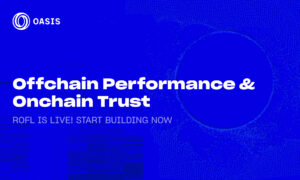Welcome to the wild and ever-evolving world of DeFi coins, where traditional finance meets futuristic technology! Are you ready to embark on a journey that will unravel the mysteries behind decentralized finance? Look no further, as we present to you our comprehensive guide – your ultimate gateway into deciphering this exciting realm. Whether you’re an experienced crypto investor or just getting started, join us as we break down the complexities, unveil the opportunities, and decode the secrets of DeFi coins. Get ready to explore new frontiers in financial freedom!
Introduction to DeFi Coins and the Concept of Decentralized Finance
Decentralized finance, also known as DeFi, has been making waves in the world of cryptocurrency. It has emerged as a revolutionary concept that seeks to democratize financial services by removing intermediaries and creating a decentralized system. One of the main driving forces behind this movement is the rapidly growing popularity of DeFi coins.
DeFi coins are digital currencies built on blockchain technology that operate within decentralized financial protocols. These coins can be used for various purposes such as lending, borrowing, trading, and investing. Each DeFi coin serves a unique purpose in the ecosystem and has its own set of features and benefits.
The concept of decentralized finance is based on the principles of blockchain technology, which facilitates peer-to-peer transactions without any central authority governing them. The key difference between traditional finance and DeFi is that traditional finance is centralized, with all decisions being made by banks or other financial institutions. On the other hand, DeFi operates on a trustless system where users have full control over their funds.
One of the most significant advantages of DeFi coins is that they offer access to financial services without any geographical restrictions or barriers. This means anyone with an internet connection can participate in these services from anywhere in the world. This aspect makes it highly appealing to those who are financially underserved or excluded from traditional banking systems.
What are DeFi Coins?
DeFi, short for Decentralized Finance, is a rapidly growing sector in the cryptocurrency industry. It refers to financial systems and applications that operate on decentralized networks, with no central authority or intermediaries involved. As DeFi gains more traction and popularity, one of the key elements driving its growth are DeFi coins.
But what exactly are DeFi coins?
In simple terms, DeFi coins are digital assets that power the decentralized finance ecosystem. They serve as a medium of exchange within the network and provide utility for various financial services and protocols such as lending, borrowing, trading, and staking.
There are several types of DeFi coins in the market today, each with its own unique characteristics and use cases. Let’s take a closer look at some of them:
1. Stablecoins: These are cryptocurrencies whose value is pegged to an external asset like gold or fiat currency like USD. The most popular stablecoin in the DeFi space is Tether (USDT), with other notable examples including USDC, DAI, and BUSD.
Stablecoins play a crucial role in enabling users to participate in various DeFi activities without being exposed to volatile price fluctuations commonly associated with other cryptocurrencies.
2. Governance Tokens: These are tokens that represent voting rights on different proposals related to particular projects or platforms within the DeFi ecosystem. Holders of governance tokens can vote on issues such as protocol upgrades or changes in fees structure.
Popular examples include MakerDAO’s MKR token and Compound’s COMP token.
3. Lending and Borrowing Tokens: These are tokens that enable users to lend or borrow assets on decentralized lending platforms such as Aave, Compound, and MakerDAO. These tokens serve as collateral for borrowing and earn interest for lenders.
Some of the notable examples of lending and borrowing tokens are AAVE, COMP, and MKR.
4. Exchange Tokens: These are tokens issued by decentralized exchanges (DEXs) to incentivize users to provide liquidity to their liquidity pools. Popular examples include UniSwap’s UNI token, SushiSwap’s SUSHI token, and Bancor’s BNT token.
5. Synthetic Assets: These are tokens that represent the price of an underlying asset like gold or a traditional stock on-chain. Synthetix is a popular DeFi platform that offers various synthetic assets on its platform such as sUSD (Synthetic USD), sGold (Synthetic Gold), and sAAPL (Synthetic Apple).
How Do DeFi Coins Differ from Traditional Cryptocurrencies?
Decentralized Finance (DeFi) has been gaining a lot of attention in the world of cryptocurrency. Many investors and traders are turning their focus towards DeFi coins, which offer a different experience compared to traditional cryptocurrencies like Bitcoin and Ethereum. But what exactly sets DeFi coins apart from these traditional cryptocurrencies? In this section, we will dive into the key differences between DeFi coins and traditional cryptocurrencies.
Centralization vs Decentralization
The most fundamental difference between DeFi coins and traditional cryptocurrencies is the concept of centralization versus decentralization. Traditional cryptocurrencies like Bitcoin and Ethereum rely on centralized entities such as banks or financial institutions to facilitate transactions, which can be slow and expensive. On the other hand, DeFi coins operate on decentralized platforms that use smart contracts to execute transactions without relying on intermediaries. This allows for faster and more efficient transactions, as well as greater security since there is no single point of failure.
Use Case
Another significant difference between DeFi coins and traditional cryptocurrencies is their use case. Traditional cryptocurrencies were primarily created as a digital form of money, with limited functionality beyond being used as a medium of exchange or store of value. On the other hand, DeFi coins have broader use cases within the decentralized finance ecosystem. These include lending, borrowing, trading, insurance, asset management, and more. By using smart contracts to automate these processes, DeFi offers new opportunities for investors while also increasing efficiency in financial services.
Stability
Traditional cryptocurrencies are known for their volatility in price , with values often fluctuating significantly in short periods. This makes them riskier for investors looking for stable returns. However, DeFi coins, particularly stablecoins like DAI and USDC, are designed to maintain a stable value by being pegged to a fiat currency or asset. This makes them less risky and more attractive to investors looking for more predictable returns.
Collateralization
One of the key features of DeFi is the use of collateralization to secure loans and other financial transactions. Collateral refers to an asset that is pledged as security for a loan or other obligation. In the world of DeFi, users can lock up their crypto assets as collateral to borrow funds or participate in other financial activities. This is not possible with traditional cryptocurrencies like Bitcoin and Ethereum since they do not have built-in smart contract functionality.
Liquidity
DeFi coins also offer greater liquidity compared to traditional cryptocurrencies. Liquidity refers to the ease with which an asset can be bought or sold without impacting its market price significantly. Since DeFi coins are actively used in various financial activities within the decentralized finance ecosystem, they tend to have higher levels of liquidity compared to traditional cryptocurrencies.
The Growth and Potential of DeFi Coins in the Cryptocurrency Market
The cryptocurrency market has seen exponential growth in recent years, with new coins and tokens constantly being introduced. One of the most significant developments within this market is the rise of decentralized finance (DeFi) coins. These are digital assets that utilize blockchain technology to create a decentralized financial system.
DeFi coins have sparked immense interest among investors and traders due to their potential for disrupting traditional finance systems. In this section, we will delve into the growth and potential of DeFi coins in the ever-evolving cryptocurrency market.
Growth of DeFi Coins
The concept of DeFi emerged in 2017 with the launch of Ethereum-based projects such as MakerDAO and Augur. However, it was not until 2020 that DeFi truly exploded onto the scene. According to data from DeFi Pulse, the total value locked (TVL) in all DeFi protocols was less than $1 billion in January 2020. By September of the same year, it had skyrocketed to over $11 billion – an eleven-fold increase in just nine months.
This rapid growth can be attributed to several factors. Firstly, there has been a surge in demand for alternative financial services that offer greater accessibility and transparency compared to traditional banking systems. This demand has only intensified with global events such as inflation concerns and government-ordered lockdowns during the COVID-19 pandemic.
Moreover, advancements in blockchain technology have made it possible for developers to create a wide range of DeFi applications such as lending platforms, decentralized exchanges, and stablecoins. These applications offer users the ability to earn passive income, access loans, and trade assets in a decentralized manner – all without relying on traditional financial intermediaries.
Potential of DeFi Coins
The potential of DeFi coins stems from their ability to disrupt traditional finance models by providing efficient and transparent alternatives. Here are some key areas where DeFi coins have the potential to make a significant impact:
1. Financial Inclusion
Traditional banking systems often fail to provide services to people in underdeveloped countries or those with limited access to financial infrastructures. DeFi protocols, on the other hand, can be accessed using just an internet connection, enabling greater financial inclusion for individuals around the world.
2. Decentralized Exchanges
Centralized exchanges, which are currently dominant in the cryptocurrency market, come with risks such as hacks and counterparty risk. Decentralized exchanges (DEXs), powered by DeFi technology, offer a more secure and transparent alternative for users to trade digital assets.
3. Borderless Transactions
DeFi-powered payments systems have the potential to enable frictionless international transactions without relying on banks or other intermediaries.
Pros and Cons of Investing in DeFi Coins
There are many benefits to investing in DeFi coins, but like any investment, there are also risks and drawbacks. In this section, we will explore the pros and cons of investing in DeFi coins to help you make an informed decision.
Pros:
1. Potential for High Returns:
The most obvious benefit of investing in DeFi coins is the potential for high returns. The decentralized nature of these coins means that they are not controlled by a central authority, giving them the potential for rapid growth and price appreciation. This makes them attractive to investors looking for opportunities to generate significant profits.
2. Diversification:
DeFi coins offer a way to diversify your portfolio beyond traditional cryptocurrencies like Bitcoin and Ethereum. They represent a new sector within the cryptocurrency market and provide exposure to different types of assets such as stablecoins, governance tokens, lending protocols, etc. This diversification can help reduce risk and create more stability in your overall portfolio.
3. Low Barrier to Entry:
Investing in DeFi coins is relatively easy and accessible compared to traditional investments in stocks or real estate. There are no intermediaries involved, which eliminates fees and allows anyone with an internet connection to invest regardless of their location or financial status.
4. Participation in Governance:
Many DeFi projects allow token holders to participate in decision-making processes through on-chain voting systems. This gives investors a sense of ownership and control over the future direction of the project they have invested in.
5. Revolutionizing Traditional Finance:
DeFi has the potential to disrupt traditional finance by offering a more transparent and accessible alternative. By investing in these projects, you are supporting this vision and potentially contributing to the democratization of financial services.
Cons:
1. Volatility:
Like all cryptocurrencies, DeFi coins can be highly volatile, with prices fluctuating rapidly. This means that there is a risk of losing a significant portion of your investment in a short period. It’s important to research and understand the potential risks before investing in any DeFi project.
2. New Technology:
DeFi is still a relatively new concept, and the technology is constantly evolving. This means that there may be unforeseen issues or bugs that could negatively impact the value of your investment.
3. Lack of Regulation:
As DeFi operates outside of traditional financial systems, it currently lacks regulatory oversight. This means that investors have limited protection in case of fraud or other malicious activities within the space.
4. Complexity:
Investing in DeFi can be complex for those who are not familiar with the concepts involved. It often requires technical knowledge and understanding of blockchain technology, which can be daunting for some investors.
Understanding the Risks Associated with DeFi Coin Investments
The decentralized finance (DeFi) industry has been gaining a lot of attention and hype in recent years, with DeFi coins being at the forefront of this trend. These digital assets are disrupting traditional financial systems by eliminating intermediaries and providing users with greater control over their finances. While investing in DeFi coins can be an exciting opportunity to participate in a rapidly growing market, it is crucial to understand the risks involved before making any investment decisions.
Lack of Regulation
One significant risk associated with investing in DeFi coins is the lack of regulation. Unlike traditional financial markets, where government bodies and regulatory agencies oversee transactions and protect investors’ interests, the DeFi market operates on a decentralized network without any central authority. This means that there are no clear guidelines or regulations to govern these digital assets, leaving investors vulnerable to potential scams and fraudulent activities.
Smart Contract Vulnerabilities
Smart contracts are self-executing computer programs that facilitate transactions within the DeFi ecosystem without requiring any third-party involvement. However, these contracts are not immune to vulnerabilities or bugs, which can result in major security breaches and significant financial losses for investors. Moreover, unlike centralized institutions that offer insurance for damages caused by system failures or hacks, DeFi projects generally do not have such safety nets in place.
Price Volatility
Just like other cryptocurrencies, DeFi coins are highly volatile assets with their value subject to frequent fluctuations. Due to the lack of stability and liquidity compared to traditional investments such as stocks or bonds, prices can go up or down significantly in a short period. This makes it challenging to accurately predict their future performance and invest wisely.
Impermanent Loss
DeFi coins that operate in liquidity pools as part of the lending and borrowing process can be exposed to impermanent loss. This occurs when the prices of the assets in a pool change, causing an imbalance between the deposited assets’ value and their actual worth. In such cases, investors may end up with fewer assets than they initially deposited, resulting in financial losses.
High Technical Complexity
Investing in DeFi coins requires a certain level of technical knowledge and skill to navigate through different decentralized applications (dApps) and understand how various protocols work. For novice investors or those unfamiliar with blockchain technology, this can be a significant barrier to entry, increasing the risk of making mistakes or falling victim to scams.
How to Buy, Store, and Trade DeFi Coins Safely
DeFi, or decentralized finance, coins are becoming increasingly popular in the cryptocurrency world. These digital currencies operate on decentralized platforms that allow for financial transactions without the involvement of central authorities such as banks. With the rise of DeFi coins, it is essential to know how to buy, store, and trade them safely. In this section, we will discuss key tips for purchasing, storing, and trading DeFi coins securely.
1. Choosing a reputable exchange:
The first step towards buying and trading DeFi coins safely is selecting a reliable exchange platform. It is crucial to research and read reviews about different exchanges before making a decision. Look for exchanges that have robust security measures in place, such as two-factor authentication (2FA) and cold storage wallets for storing funds.
2. Use a hardware wallet:
Hardware wallets offer an extra layer of security by keeping your private keys offline and away from potential online threats. They are physical devices that store your cryptocurrency offline and can only be accessed through a pin code or passphrase. We recommend using hardware wallets such as Ledger Nano X or Trezor Model T to store your DeFi coins securely.
3. Be cautious of phishing attacks:
Phishing attacks involve fraudsters posing as legitimate entities to acquire sensitive information from unsuspecting victims. To avoid falling prey to these scams when buying or trading DeFi coins, always double-check website URLs before entering any personal information or clicking on links sent via email or social media messages.
Conclusion
As we have seen, DeFi coins are changing the way we think about traditional financial systems. From decentralized platforms to decentralized governance, these assets offer a new level of flexibility and control to their users. By understanding the fundamentals of DeFi and researching individual projects before investing, one can navigate this emerging market with confidence. With continued growth and development in the sector, it is an exciting time for those interested in DeFi coins and their potential for revolutionizing our financial world. So why not dive into this ever-evolving space and see what possibilities lie ahead?



































